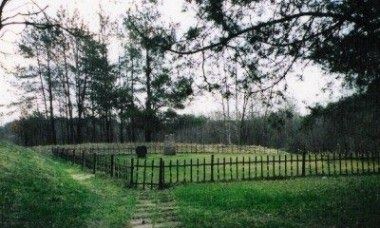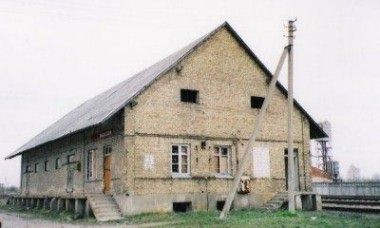 |
 |
55°24' / 22°54'
Translation of the “Vidukele” chapter from
Pinkas Hakehillot Lita
Written by Josef Rosin
Published by Yad Vashem
Published in Jerusalem, 1996
Acknowledgments
Project Coordinator
Our sincere appreciation to Yad Vashem
This is a translation from: Pinkas Hakehillot Lita:
Encyclopedia of Jewish Communities, Lithuania,
Editor: Prof. Dov Levin, Assistant Editor: Josef Rosin, published by Yad Vashem, Jerusalem.
JewishGen, Inc. makes no representations regarding the accuracy of
the translation. The reader may wish to refer to the original material
for verification.
JewishGen is not responsible for inaccuracies or omissions in the original work and cannot rewrite or edit the text to correct inaccuracies and/or omissions.
Our mission is to produce a translation of the original work and we cannot verify the accuracy of statements or alter facts cited.
(Pages 223-224)
Written by Josef Rosin
Translated by Robert J. Kurtzman[1]
| Year | Total Population |
Jewish Population |
Percent |
| 1851 | 321 | .. | .. |
| 1897 | 747 | .. | .. |
| 1923 | 694 | 221 | 32 |
| 1940 | 750 | About 160 Jewish families | About 21 |
Viduklė is located in northwest Lithuania, in the Zhamot region, near the main road from Kovno to Memel (Klaipeia), about 14 kiilometers northwest of the capital city of the district of Rasin (today, Raseiniai). The railroad station of Viduklė is about 3 kilometers from the town.
Viduklė is mentioned in historical documents from the 15th century as the residence of the Catholic hegemony of Zhamot. During the Russian rule (1795-1915) the village belonged to the region of Vilna and from 1843 – to the region of Kovno. In this period and in the period of independent Lithuania (1918-1940) Viduklė was the sub-district center.
Jews began to settle in Viduklė in the middle of the 17th century. In 1662 there were 4 Jews in the town. Their numbers grew after King August III granted privileges to the Jews on May 21, 1742. The Jews made a living as storekeepers, craftsmen, and agriculture, mostly on leased land. In 1879 they built a new Beit Midrash [Study House] on the ruins of the old one. From a list of donors for the Jewish settlements of the Land of Israel, many names of the Jews of Viduklė are mentioned. The delegate representative was Zeev Telem.
During World War I, the Russian regime set a date for the expulsion of the Jews, May 5, 1915, but the Germans captured the town a week before the date.
In the period of independent Lithuania, the Jews of Viduklė participated in the elections to the First Seim [Parliament], which were held in October 1922. The Zionists received 86 votes, “Achdut” (Agudat Yisrael) – 13 votes and the Democrats – 10 votes.
In this period also, the Jews of Viduklė made a living from commerce, crafts and agriculture. According to a Lithuanian government survey carried out in 1931 there were 4 shops, two of which were owned by Jews: a clothing store and a pharmacy. According to the same survey there was a Jewish owned wood mill, a flour mill, a wool comb and a tannery. In 1937 there were 15 active craftsmen: 3 tailors, 2 bakers, 2 glaziers, 2 butchers, oven builder and 5 others. Out of 7 telephones that were in Viduklė in 1939, one was owned by a Jew.
Jewish children received their elementary education in a Hebrew school, a branch of the Tarbut movement and a cheder. Some of the graduates continued to study in the Yeshivot of Kelm and Telz. There was a library of Hebrew and Yiddish books in Viduklė.
Many of the Jews in Viduklė belonged to the Zionist camp and among them followers of most of the Zionist parties. The results of the Zionist Congress elections in Viduklė are presented in the following table. Some of the local people joined the “Achva” group from Kovno that emigrated to Eretz Yisrael in 1920 and established Kibbutz Sharir.
| Congress no. |
Year | Total “Shkalim” |
Total votes |
Working Eretz Yisrael |
Revisi- onists |
General Zionists |
Politicals | Mizrachi | ||
| S.Z. | Z.Z. | A | B | |||||||
| 14 | 1925 | 20 | - | - | - | - | - | - | - | - |
| 15 | 1927 | 11 | 10 | 10 | - | - | - | - | - | - |
| 16 | 1929 | 7 | - | - | - | - | - | - | - | - |
| 18 | 1933 | - | 9 | 6 | - | - | 3 | - | - | - |
| 19 | 1935 | - | 63 | 10 | - | - | 3 | 23 | - | 27 |
Religious life in Viduklė was concentrated around the great study hall. Among the rabbis who served in Viduklė were: Rabbi Yechezkel Rabinovitz (1879-1902), his son, Rabbi Moshe Avraham Shmuel Rabinovitz (author of the book “Zichron Yechezkel”, Warsaw 5672), Rabbi Yedidiya Gurvinsky, Rabbi Yehoshua Hacohen Kaplan (author of the books “Shaari Hadoshed, “Maaynei Hayeshua, and others), who was the last rabbi of the community and perished in the Holocaust with the people of the town.
The welfare organizations active in Viduklė were “Bikur Cholim”, free loan associations and others.
Among the native-born were Yisrael Kaplan Hakohen, son of Rabbi Meir, a well-known scribe and educator. A second son was a member of the rabbinical court in Tel Aviv.
With the annexation of Lithuania to the USSR and its becoming a Soviet republic, in 1940, factories and large stores , may of which were Jewish owned, were nationalized. All the political parties and Zionist youth groups were dispersed. Hebrew education and cultural centers were closed.
On the day the war broke out between Germany and the Soviet Union, June 12, 1941, in the morning people from Tavrig came to Viduklė in cars and wagons. They informed those in Viduklė that Tavrig was in flames and the Soviets were fleeing. The next day the Jews in Viduklė loaded whatever they could on wagons and fled to the villages to find hiding places with their Lithuanian neighbors. On the same day, Monday, in the afternoon, the Germans came into the town. On that evening the Jews began to return to their homes. Only one Jew from Viduklė, who worked in Racin, managed to flee to the Soviet Union.
The German soldiers that occupied the area were concentrated in the railroad station of Viduklė. The Lithuanian nationalists took over the local institutions and organized local rule. Immediately they mistreated the Jews: bread was distributed to the people according to daily rations and was baked by Jewish bakers,; only scraps were distributed to the Jews; they were taken to all kinds of work with beatings and humiliations. Two Germans used to come with wagons from the nearby village, Nemoksht, and with local Lithuanians would enter homes, chasing out the inhabitants and stealing everything; every Jew had to tie a yellow badge in the shape of a Mogen David on his back; some 15 Jews , men and women were arrested under suspicion of being communists and were incarcerated in the prison in Racin; the women were released after some time but the men were never seen again. One day an order was given that all males from 14 years had to gather in the morning in the local council; among those who had assembled in the council, the aged were returned to their homes. All the others, under heavy guard were brought to the railroad station and were concentrated in the home of the Friedman family and the threshing mills in their yards; the men from Nemoskst were brought to the same place. Those Jews were ordered to pile heavy bundles on theier backs and carry them from place to place and afterwards to return at a running pace. In addition they had to do “exercises”. On July 14, 1941 (19 Tamuz 5701) they took all the old men that had been jailed in the study hall and brought them to the train station. Among them was the old rabbi of Viduklė, Rabbi Yehoshua Hacohen Kaplan who found it difficult to keep up the necessary pace and was pushed by the guards. The elderly Jews from Nemoksht were also brought there. There were all transported to the pool that was nearly. There they were told to take off their clothes and when they were in the pool, they were brought naked in groups of ten to the pit that had been prepared and shot. Each group was witness to the murder of the group that came before them.
The women and children who were left in the village were ordered to leave their homes and dwell in the study hall and the four homes next to it. For some time the girls went out to various jobs such as washing floors in the police station and the city hall and near the train station. On August 21 the women felt that something was going to happen and some of them fled to farmers they knew. On Friday, August 22, 1941 others succeeded in fleeing to Ghetto Shavli (29 Av 5701). Armed Lithuanians moved women and children from the study hall to the Jewish cemetery, shot them and buried them in a mass grave. According to the eyewitness testimony of a Lithuanian woman who lived nearby, they forced the women to undress and the children were thrown into the pits while they were still alive.
According to Soviet sources, a mass grave was found near the train station, 100 meters to the right of the road with approximately 200 male bodies; in the cemetery a second mass grave had about 100 women and children.
In the beginning of the 90s a memorial stone was place at the mass grave. Inscribed on it is the following epitaph in Yiddish and Lithuanian: “In this place Hitler's murderers and their local accomplices murdered about 100 Jewish women and children. Additional text in Lithuanian states, “Sacred shall be the memory of those murdered for no crime they committed.” Also, near the train station a memorial stone and written on it in Yiddish and Lithuanian is, “On this place Hitlerite murderers and their local accomplices, in July 1941, murdered about 200 Jewish men.” In the old Jewish cemetery a stone was places with the following text in Yiddish and Lithuanian, “Old Jewish Cemetery, dedicated to the memory of the departed.”
|
|
|||
| Mass grave, Vidukele | Railroad Station, Vidukele |
|
|
|||
| Sign at Mass Grave, Vidukele | Old Cemetery Sign, Vidukele |
 Yizkor Book Project
Yizkor Book Project
 JewishGen Home Page
JewishGen Home Page
Copyright © 1999-2026 by JewishGen, Inc.
Updated 21 May 2010 by LA